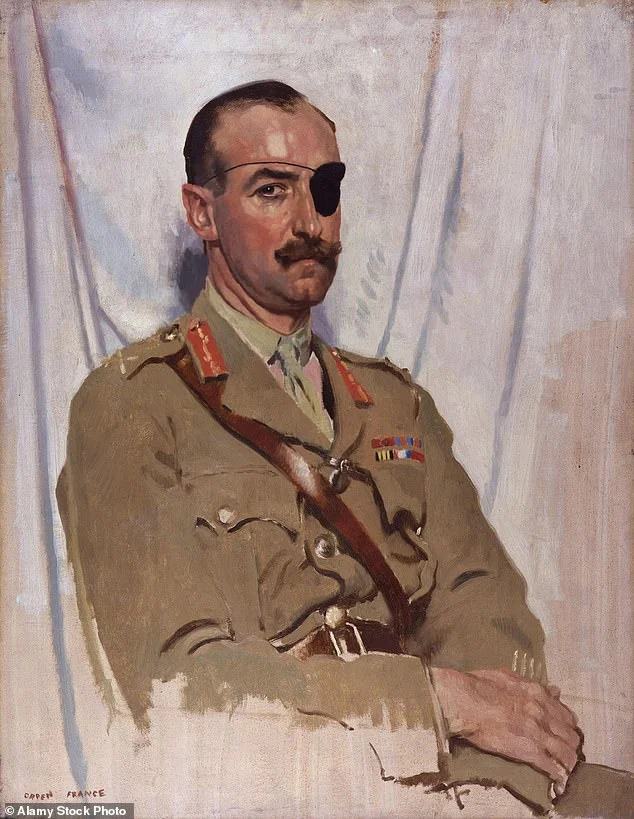When it comes to tales of courage, few can match the story of Lieutenant-General Sir Adrian Carton de Wiart.
On this Remembrance Sunday, it’s worth pausing to remember a man whose life was less about survival and more about defying it — a soldier who earned the nickname “the unkillable” for good reason.
Over a military career that spanned nearly fifty years, his exploits are the stuff of legend, though the word barely scratches the surface.
From Oxford to the Boer War
Born into an aristocratic family in Brussels in 1880, Carton de Wiart began life on a path toward law at Oxford. But the call of adventure proved irresistible
. In 1899, he abandoned his studies to fight in the Second Boer War.
It was here that he endured his first serious injuries — being shot in the stomach and groin — and yet he returned to the front almost immediately, eager to continue the fight.
A regular commission as a second lieutenant in the 4th Dragoon Guards followed, along with a stint in India, naturalisation as a British citizen, and a marriage to an Austrian countess.
But these early experiences were just a prelude to the true crucible of his life.
The Horrors of War and the Making of a Hero
In 1914, while serving in Somaliland, Carton de Wiart faced one of the most brutal moments of his career.
A British fort came under attack by forces led by Muhammad ibn Abdallah, and he was shot in the face, losing his left eye and part of his ear.
Friends recalled that his language at the time was “awful,” but he carried on fighting, earning the Distinguished Service Order (DSO) for his bravery.
Back in London, he discarded a glass eye in frustration, adopting instead the iconic black eye patch that would become his signature look — earning him the nickname “an elegant pirate.”
By February 1915, he was on the Western Front, commanding infantry battalions and brigades, sustaining seven more injuries, including the near-loss of a hand.
When doctors hesitated to amputate two fingers, he simply pulled them off himself, later surrendering the rest of his hand to surgery.
Victoria Cross and the Battlefront
The Battle of the Somme in 1916 cemented Carton de Wiart’s status as a living legend.
Shot through the skull and ankle while commanding the 8th Battalion of the Gloucestershire Regiment, he took charge when three other battalion commanders were incapacitated.
His Victoria Cross citation described him as “inspiring to all,” a man whose courage shone even amidst unimaginable chaos.
Subsequent battles — Passchendaele, Arras, and Cambrai — left further scars: bullets through his hip, ear, and leg.
Yet each time, he returned to London’s hospitals, so familiar to the nurses that a set of pyjamas was kept ready for him.
His motto was simple: lead from the front, with the rallying cry ‘Follow me!’
Adventures Beyond the Trenches
Even after the First World War, Carton de Wiart refused the quiet life.
A CBE appointment and roles including aide-de-camp to George V and leader of a British mission in Poland followed.
But it was the Second World War, when he was in his 60s, that showcased his extraordinary tenacity.
Serving in Norway and Yugoslavia, he survived the crash of his Wellington aircraft in the Mediterranean.
He swam to enemy-held shorelines, helped injured crew members, and endured capture by Italians.
During captivity, he became a notorious escape artist, digging tunnels for months and once evading recapture for eight days disguised as an Italian peasant — despite speaking no Italian.
Enduring Legacy
Winston Churchill himself admired him as “a model of chivalry and honour.”
Carton de Wiart went on to represent Churchill in China and finally retired from the army in 1947 after breaking his back.
He lived the rest of his life in Ireland, fishing and shooting, passing away peacefully in 1963 at the age of 83.
In his memoirs, he reflected wryly, “We are told the pen is mightier than the sword, but I know which of these weapons I would choose.”
Few have embodied bravery, resilience, and adventure like him.
His story reminds us of the extremes of courage and the human spirit’s capacity to endure against all odds.
Honouring His Memory
Lord Ashcroft is commemorating Carton de Wiart and other gallantry heroes by launching a virtual exhibition of Victoria Crosses and George Crosses on Armistice Day.
The online platform will provide a digital tour of these extraordinary medals, preserving the stories of remarkable individuals for generations to come.
For those seeking inspiration, Sir Adrian Carton de Wiart’s life offers more than tales of war — it offers a blueprint of resilience, audacity, and unbreakable spirit that we are unlikely to see again.
